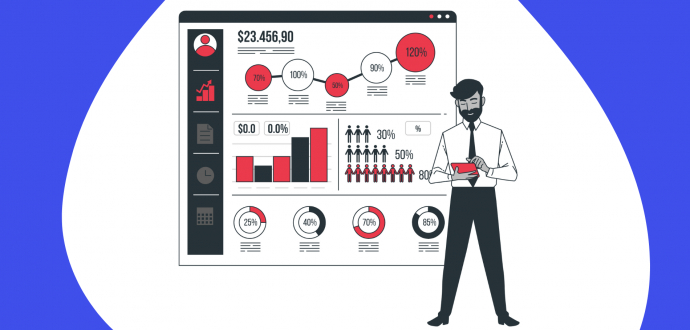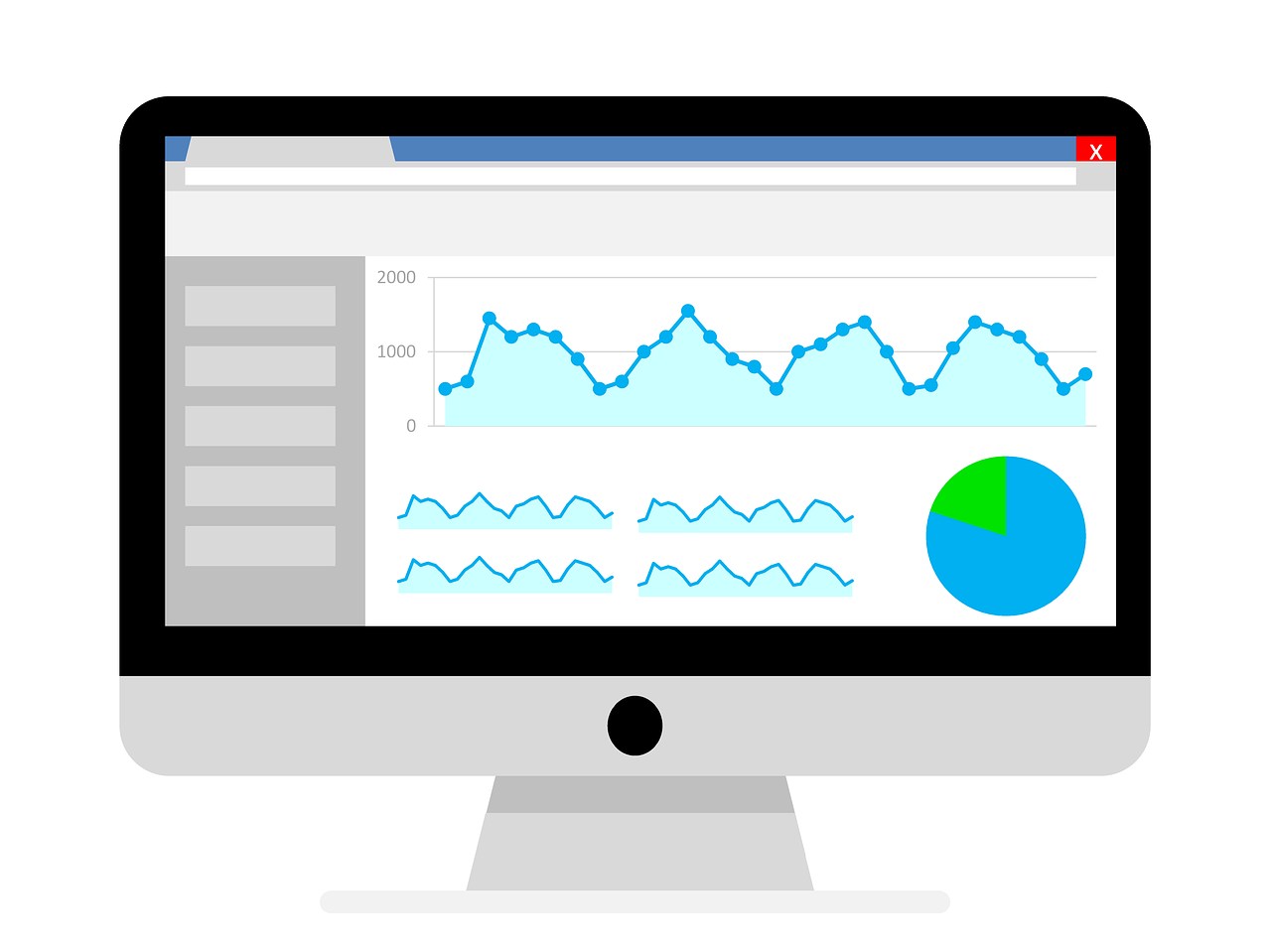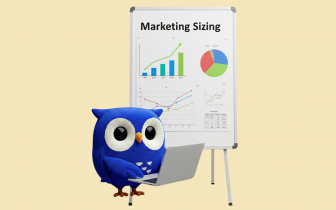Discrete vs. Continuous Data: What Marketers Need to Know

Ever heard other marketers or SEO specialists talk about discrete vs. continuous data? If that was your first time, how did it make you feel?
Chances are that for that one brief second, you may have wondered if they were speaking Klingon or some other alien language. It’s even worse when you don’t really like math or anything related to numbers (we feel you on this).
But then comes the truth. It’s pretty difficult to try and run any kind of successful digital marketing business without relying on data. In fact, you have to tap into stats in new ways if you want to improve your marketing strategies.
The only trouble is there are different types of data. That’s where the concept of discrete and continuous data comes from. But what do they even mean? What role do they play in marketing? How can you use them? Keep reading to find out.
P.S.: Don’t worry — it’s actually more exciting than your high school math class.
What is discrete data (with examples)?
Discrete data is the straightforward, always precise version of numbers. It’s whole numbers (none of those weird fractions and confusing decimals) and used for things that are countable. It’s also positive — so there’s nothing like negative clicks or 2.4 employees (hopefully).
Are you still not sure what we mean? Then, here are a few discrete data examples to help paint a picture:
- The number of your social media followers, product purchases, website visitors, and customer complaints.
- Number of guest posts published, high-quality backlinks received, etc.
- The number of leads generated last month, products returned, and employees hired this year.
- Number of reviews received this month/year, comments made on your post, clicks received, etc.
TL;DR: What is discrete data? It is countable values represented by whole numbers.
What is continuous data (with examples)?
Now that we have the discrete data definition out of the way let’s take a whack at the continuous data, which is sometimes also called quantitative measurement data. If discrete data is like counting grains of rice, continuous data is like trying to measure the water for boiling that rice.
If you can’t count something but can measure it, then you are dealing with quantitative measurement data.
It’s used for things that are not fixed and always flowing, always changing. Yes, that’s the lyrics from Disney’s Pocahontas song about a river, but it might as well have been about quantitative measurement data.
Some of the common potential marketing examples could include:
- Website loading speed and time spent on a web page or website.
- Conversion rates and year-end sales.
- Customer satisfaction rates, etc.
TL;DR: What is continuous data? It is measurable values that can include fractions, decimals, and percentages.
What is the difference between discrete and continuous data?
You can break down the key difference between discrete and quantitative measurement data types as follows:
Discrete data – where every unit counts
This type of data is easily recognizable by the fact that it is:
- Finite (i.e., there is a beginning and a clear end).
- Non-negative (none of those pesky -1 numbers).
- Countable (basically, any number you can count on your fingers and toes is all part of discrete numerical data).
- It can be divided into groups — i.e., customer segments (more on this later).
- It can be represented with bar graphs and pie charts. That’s not to say that graphs are strictly for discrete data. With a discrete vs. continuous graph, you get separate points with the former, but the latter just has an unbroken line.
Source: BetterExplained
Continuous data – where numbers flow without end
The continuous data, on the other hand, is obviously:
- Complex (i.e., not so easy to understand as it is with hard numbers).
- Measured using line graphs and histograms.
- Used in regression analysis.
- Its variable changes over time and can be random.
- Variables can have different values at any given time.
How do these data types help in marketing?
Both discrete and quantitative measurement data have important roles to play when it comes to connecting brands with their customers.
Discrete data use cases
Discrete data is very useful for those occasions when you need solid insights for:
- Customer segmentation. You can group or sort customers into different segments based on age, gender, and so on. This can then help you create personalized ads or special offers for each group.
- Behavioural analysis. You can tell how clients are responding to your ads based on the number of clicks, comments, etc. So, when lots of people are sharing a post, you don’t need a crystal ball to tell you that content is a hit — that’s what discrete data is for.
- Web performance metrics. Track simple but important metrics, like the number of new users, products sold, and so on. If the number of new users keeps going up, that’s definitely a sign that you are becoming popular.
- Customer feedback. It makes it easy to track how satisfied customers are with your products and services. If you create a survey and lots of people say positive things about your brand, then you know you are doing the right thing.
Bottom line: Discrete data helps you quantify your business organization’s operations. This way, you can make data-driven decisions that bring you closer to your goals.
Continuous data use cases
This type of data is useful for helping you see whether you're moving in the right direction. As a result, you can use it to improve your marketing strategies, especially since it helps you:
- Stay up to date on trends. Knowing how much time people spend on your website shows when your content is working. It also makes it easy to spot issues with your site. For instance, if people are exiting right away, then you know something is wrong.
- Understand how to cater to customer preferences. Continuous data gives you the lowdown on what your customers like. You can then offer personalized recommendations or discounts that they are likely to accept. They get a deal they’ve been looking for. You make profits. Win-win.
- Predict outcomes. You can use the insights gathered from non-discrete data for predictive analytics. By looking at patterns and trends, you can tell when demands are likely to be higher. You can also ensure your inventory is enough to meet the demands.
Bottom line: With continuous data, it is easier to monitor processes and analyze online performance.
How can marketers use both discrete and quantitative measurement data effectively?
So, now that we’ve covered the difference between discrete vs. continuous data, it’s time to move our focus to its use. That means how you can put the two together to improve your online brand presence or that of your clients. Here’s our top tips:
1. Only collect the right data type
Each data type has its special appeal. So, you have to make sure that you are always drawing insights from both of them, factoring in different use cases for each.
For example, discrete data type gives you a broad view — Who are your customers? What products are they buying? When do they usually buy? But this is not nearly enough.
So, continuous data then plugs in the missing details — Which pages do they visit? How long do these users stay on each page? How much do they spend?
Together, discrete and continuous statistics can give you a pretty complete picture of the customer’s journey. That’s why focusing on just one type of data means you miss out on crucial details. The kind that can help you improve on what you are currently doing.
But how do you get all this information in the first place? You can start with SEO tools like Google Analytics and GSC to get the basics. Then, you can complement these stats with software like Hotjar to see heatmaps and learn customers' behaviors further.
You can also conduct surveys or use social listening tools as well to collect your data.
Source: Hotjar
2. Find the story the data is telling you
Now you have the hard data, what should be the next move? Well, it’s the moment of truth. You must present these numbers in a form that allows your team or client to get a 360° view. What’s the best way to do that?
By using data visualization tools. They give you a much better understanding than an Excel table can ever do. We have nothing against Excel (don’t get us wrong). But the easier it is to comprehend your stats, the faster you can apply them.
Your team will definitely make more sense of those continuous vs. discrete graphs and charts than the raw data you collect.
Source: Freepik
Depending on how appealing and clear your visuals are, your team or clients can see what’s going on at a glance. For example, a downward slide on the growth chart usually means a decrease has occurred and vice versa.
Now, this example is obvious, but you can also find many less cliché things to work on. With everyone on the same page, it gets easier to brainstorm as a group and come up with ideas to move the business forward.
3. Improve product features and user experience
What is discrete numerical and continuous data for if not to help you make more profitable decisions? Exactly.
One of the great applications is to check how often people use each feature you offer and how much time they spend on different web pages.
This is crucial to understand whether all your dev sprints make any sense. You wouldn’t want to work on new updates just to find out that no one needs them, right?
Now, if you find out that lots of users like a particular feature but they don’t really stay long on that page, then it’s time to take a closer look. Maybe there is a problem with the feature itself, or the interface is confusing.
No matter what that is, one thing is clear — you have to fix this. See how powerful your data could be. Of course, you can find all this out by creating some focus groups. Yet, when it comes to constant monitoring, big volumes of stats are the only way to go.
The same goes for your web pages. If lots of people keep clicking on a page but then exit immediately, then it’s time to work on it. It could be the content or page load issue. But whatever it is, it needs to be solved before it gets worse.
4. Create better-targeted ads or content
If someone asks, “What are discrete numbers good for?” Most people will say it’s for creating a better marketing strategy, and that’s not far from the truth at all.
Instead of blindly creating and posting content, you want to look at the hard numbers and see what people engage with the most. Check the pages they visit and what they share, and then use that to your advantage.
So, what happens if your social media gets the most engagement and drives the most traffic to your site? You create more SM content. The same works for your in-house blogs, guest blog posting, video content, podcasts, etc.
Say you notice that people engage more with posts made during a particular time on a specific channel. What does it tell you? Well, congrats — now you know what your post schedule should look like.
All this is equally (if not more) important when it comes to ads. PPC simply won’t work if you don’t use data to adjust it. In the end, it is all about constant trial and error.

5. Make data-driven decisions
At this point, you can easily explain what is discrete data in statistics. Besides, you have some great tips on how to make all those numbers meaningful to you. But it’s really more useful when it is applied to every part of your business.
There is nothing more dangerous than making big decisions about your company without doing any research. You could lose money, waste your time, and have nothing to show for it. Chances are that you know at least one story like this that ended badly.
It’s the same for all your business decisions. You should always use the data to decide whether it’s worth it to adopt a new channel, buy or make more products, etc.
So, for example, you can look at the traffic from a location and see if it’s worth opening a new store or warehouse there. Alternatively, you can predict whether it’s worth stocking up just before the holidays or not.
Long story short — when you use data as part of your decision-making process, you can reduce risks and spot threats earlier. Wouldn’t you want that?
Conclusion
We have some good news for you. One — your data lecture is over (phew…). Two — now, you know everything you can possibly need, from continuous and discrete data meaning to the use cases for each of them.
It’s important to remember that each data type is unique but better together. So, while having it all is often hard or impossible, here, it is exactly what you should do. One more thing, don’t quit early or after one or two tries. As long as you are consistent, you will see great results.






